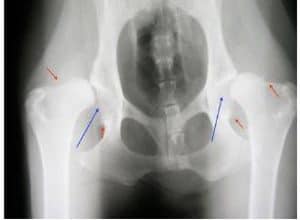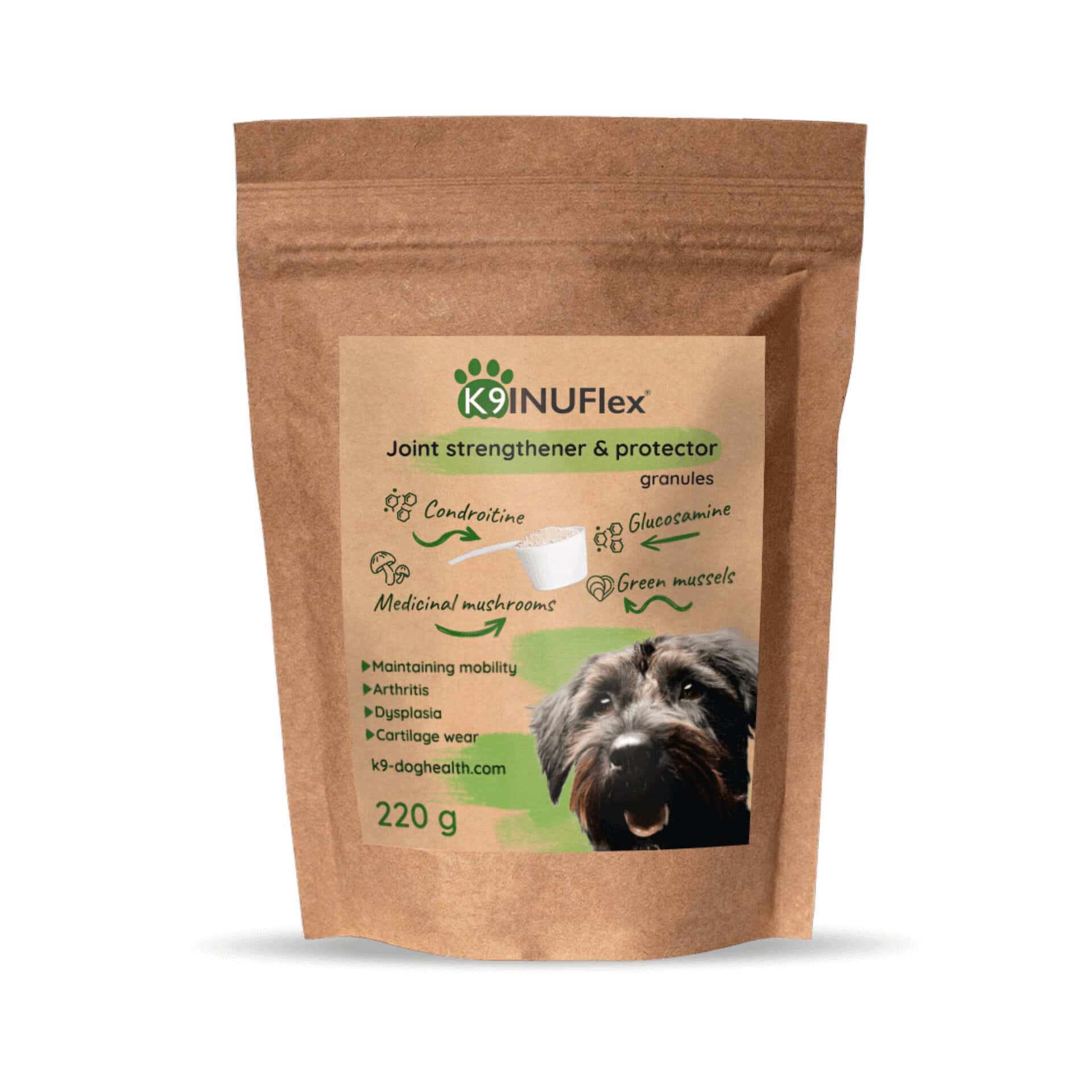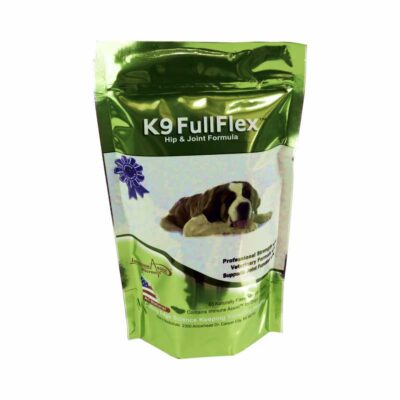Hip dysplasia is a hereditary disease, which is inherited with a so-called threshold value. The housing conditions (overfeeding, inappropriate movement) can increase the value of a dog below the threshold value, which thus tips over the threshold and the disorder is realized. Puppies of two parents around the threshold are also likely to have a value that exceeds the threshold, although neither parent apparently has dysplasia.
Description of hip dysplasia

In the constantly sprained joint, after a while, wear and tear occurs between the cartilage of the femoral head, which moves in and out, and the rim of the pelvis. In addition, sterile arthritis, after a while cartilage degeneration, cartilage deposits, degenerative joint changes, in summary: hip joint arthrosis occurs.
Even a partial sprain of the joint and the resulting inflammation can cause movement disorders, but the real pain and lameness can be caused by wear and tear of the cartilage and the appearance of arthrosis.
Depending on the dog’s breed, sensitivity and degree of dysplasia, it can tolerate the disease well and even live its life without serious symptoms. In more sensitive breeds, especially large dogs, the disease can lead to severe lameness and movement disorders.
In terms of its formation, dysplasia is basically inherited genetically. The dog’s rapid growth, nutrition, and early stress can also be considered predisposing factors.
The symptoms of dysplasia can develop as early as around six months to one year of age, but can also appear at any time later in life. In the treatment of hip dysplasia, medication is used in milder cases, and surgical solutions are used in more advanced cases.
It is important to emphasize that dysplasia surgery is justified only in the case of dogs with clinical dysplasia, lameness, or movement disorders.
Screening
plays an important role in preventing hip dysplasia and stopping its spread.
- Then, on the one hand, parents with breeding concerns are screened out, thus reducing the birth of offspring genetically burdened with dysplasia.
- On the other hand, during pre-screenings, the hips of growing dogs are examined, so that the symptoms can be alleviated in time with proper exercise and nutrition, as well as nutritional supplements.
The recommended pre-screening time is around six months of age, and the final screening (depending on the screening station) can be determined between or after one to two years of age.
In a significant number of breeds prone to hip dysplasia, elbow dysplasia can also occur, which must be taken into account during the screening test.
Symptoms of hip dysplasia
Symptoms of hip dysplasia are typically noticeable from the fifth month. The most common signs are:
- Post-movement pain
- Discomfort
- Alteration in the dog’s gait, difficulty walking
- Stiffness in the hind legs
- When jumping, the feet touch the ground like a spring of a rabbit
- Difficulty climbing stairs
- Limping
- Muscle breakdown
- The dog has difficulty or is unable to stand up from a lying position.
Treatment of hip dysplasia
Whatever dysplasia rating our pet has received, it will greatly improve its condition if:
- Body weight is maintained at the ideal level for the breed, with the help of an appropriately modified dysplastic diet, and a satisfactory exercise programme .
However, it is important to avoid overloading the puppy when moving it, i.e. if it gets tired, do not force the movement. In addition, a sedentary lifestyle is not good either, because the normal development of the gluteal muscles and hip joints requires adequate movement. - We give him a non-steroidal, anti-inflammatory and analgesic supplement rich in natural anti-cartilage substances, such as K9 INUFlex® or K9 FullFlex™.
In the case of a breeder with a mild dysplasia, it is good to know that this is not a particularly bad thing. It may even make your dog a breeding recommendation for the breed and allow it to live out its life without symptoms.
In the majority of moderate cases detected in time, the further aggravation of the disease discovered at a young age can be reduced by various medicinal or nutritional supplement treatment, as well as with the help of an appropriately modified diet and exercise program.
Even in cases of severe dysplasia, there are various traditional (modern surgical procedures) and alternative (golden ball implantation (GBI)) solutions that greatly improve the condition of our pet.
With proper feeding, moving the dog correctly, and with the right food supplement the chance of developing dysplasia and the aggravation of existing symptoms can be greatly reduced!




